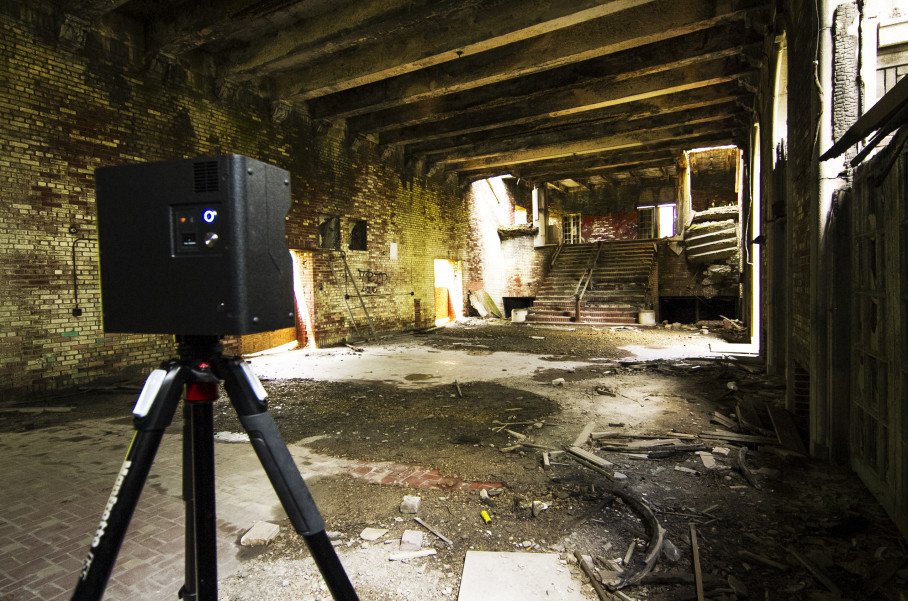How disaster recovery technology is changing with extreme weather events
Extreme weather events are increasingly impacting industries and individuals all over the world. See how the insurance industry is innovating documentation with 3D reality capture while creating more efficient commercial and residential claims cycles for

It’s the reality we live in today. Extreme weather events are increasingly intense, frequent and destructive. As climate change fuels this rise, the impact of these events is often devastating and widespread, with effects that can be felt long after they’ve since passed.
As the nature of extreme weather changes, so too is the way in which the insurance industry aims to meet its challenges, implementing technology designed to capture disaster recovery more efficiently.
the potential for physical climate risks may change in non-linear ways, such as a coincidence of previous un-correlated events, resulting in unexpectedly high claims burdens.” – International Association of Insurance Supervisors Report
New reality in disaster recovery
The numbers can be staggering. According to the National Oceanic and Atmospheric Administration (NOAA), billion-dollar extreme weather events are taking place more often and in different forms across all regions of the country.
Analysis by MunichRe has identified a long-term trend in an increase in the number of natural catastrophes around the globe, predominantly attributable to weather-related events like storms and floods. In fact, the cost of these events has burdened the insurance industry to a point where insurance could become outright unaffordable for many Americans.
In an effort to innovate the industry and mitigate some of these growing trends, 3D reality capture is being implemented to create efficiency throughout the claims cycle and streamline the path to disaster recovery and contingency planning.
Insurance professionals are using the complete and accurate documentation of 3D reality capture to not only to assess a loss post-event, but also ahead of an extreme weather event as a part of emergency pre-planning. Reality capture in construction is an innovation that’s providing reliable documentation of conditions and contents for commercial and residential applications, which is made accessible at any time, from anywhere.
Commercial preparedness planning
There are a number of questions to ask when truly assessing the full-preparedness of a commercial business for an extreme weather event or other emergency scenario. There are many tools designed to addresses the many factors that could be at play.
One company that specializes in such planning, PrePlan Live, lists six top preparedness considerations for businesses:
How will a business disruption affect operations?
What will be the impact on employees and customers?
Is there a Business Continuity Plan?
Can you access your plans, even at inopportune times? (i.e. out of town, on vacation)
What disaster remediation/restoration company is best suited to handle your recovery needs and how do you provide them all necessary information?
What can you do before an event occurs, to ensure any potential insurance claim adequately covers damages, restoration and loss?
The International Association of Insurance Supervisors Report notes that physical, transition and liability risks, as well as figures on extreme weather events, point to a “growing trend of damages, both for insured and uninsured goods.”
Finding answers to these questions goes a long way in meeting the current liabilities being faced by insurance professionals and policy holders alike.

Embedding media and important information is done easily the digital twin with 'Mattertags'
Residential extreme weather event recovery
The devestation of an extreme weather event impacts all areas of a community. However, perhaps nowhere is that felt more greatly than with the residences that are destroyed and people who are displaced in the aftermath.
According to the UN World Meterological Organization (WMO), extreme weather events impacted nearly 62 million people in 2018 and displaced more than two million from their homes.
Getting these individuals back into their homes as soon as possible is a goal of every insurance professional. Of course, much of this is dependent on the existing and forecasted conditions of the environment. At the same time, there are aspects of the claim cycle where insurance professionals can have an impact, creating efficiencies that improve the bottom line and get customers back in their homes quicker. By documenting losses with 3D reality capture, these efficiencies are being realized.
Insurance professionals are utilizing 3D reality capture to create complete and accurate documentation. As a result, they’re finding the ability to avoid disputes, track line items, and conduct remote adjusting, all as a part of a streamlined claims cycle.
Whether it’s in planning, mitigation, restoration, reconstruction or anywhere in between, 3D reality capture is aligning all stakeholders to a single point of collaboration. As the insurance industry looks to adapt to the nature of today’s extreme weather events, implementing innovation is instrumental in bringing stability and accountability to what's increasingly, more volatile conditions.
